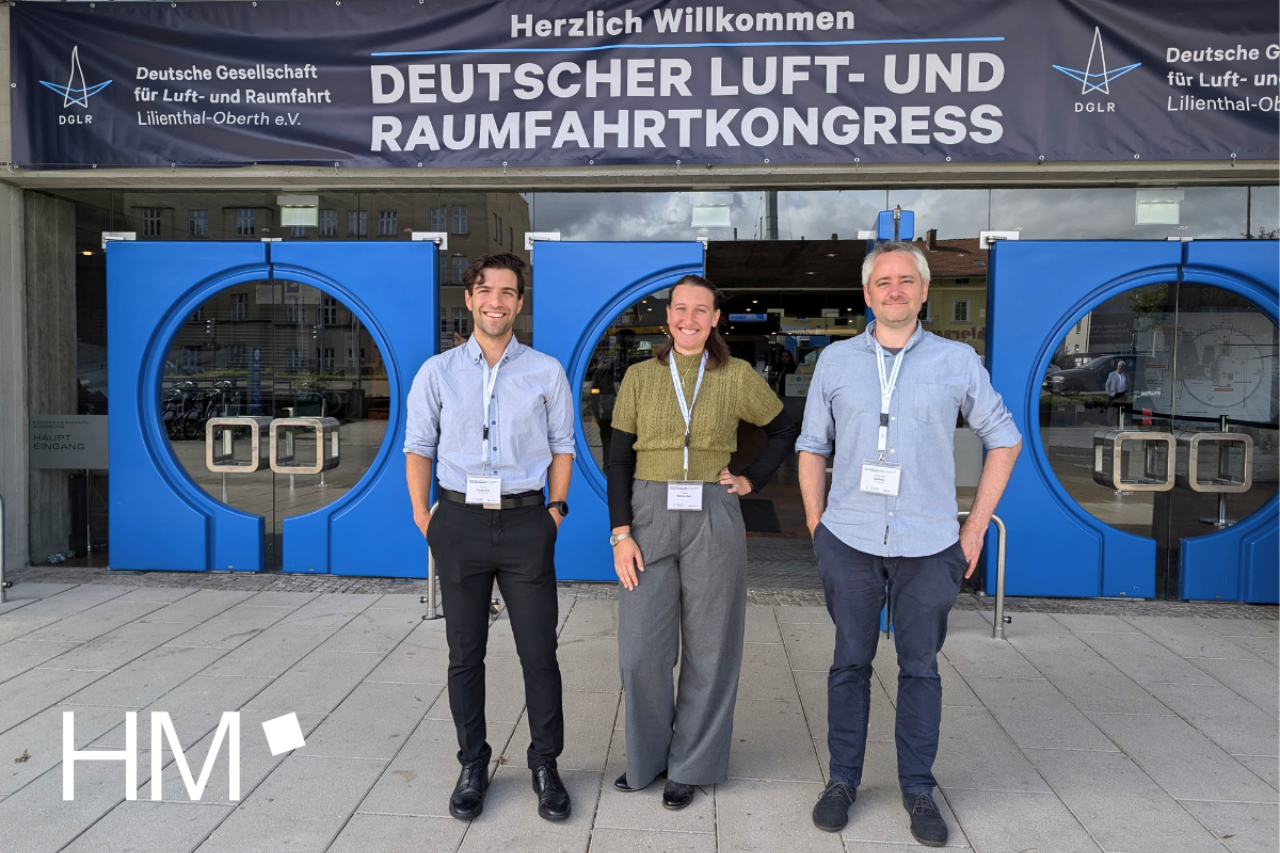
HM Researchers at the German Aerospace Congress 2025
Augsburg, September 2025
For three days, Augsburg was the hub for the latest developments in aerospace technology. At the German Aerospace Congress (DLRK), organized by the German Society for Aeronautics and Astronautics (DGLR), over 1,000 experts presented their research. Topics such as urban air mobility, unmanned aircraft, artificial intelligence, and sustainability were particularly prominent.
The Institute for Mobility and Life in Motion(IMM) at Munich University of Applied Sciences was also represented with three contributions: Sabine Wisbacher, Tobias Augustin, and Ferdinand Settele showcased their work, demonstrating how research at HM combines technical foundations, societal relevance, and practical applications.
Precise Models for Complex Rotor Blades
Helicopter rotor blades are among the most complex components in aviation, especially when equipped with movable flaps that actively modify the aerodynamics. Sabine Wisbacher developed a method to create a linear model of the rotor blade from simulation data. These models form the basis of modern control systems: only when a rotor blade’s behavior is precisely described can reliable control strategies be developed. Notably, the method is not limited to simulations but can later be applied to real flight data, an important step toward practical control systems.
Drone Swarms in Wildfire Response
Tobias Augustin addressed one of the most pressing challenges of climate change: wildfires. In the AIDER project, he designed an operational concept for autonomous helicopter swarms that can combat fires efficiently. This involves not only the technical capabilities of the aircraft but also their integration into existing structures of firefighting and disaster management. Key aspects include swarm management, flight control, and communication between drones. The approach: by coordinating multiple small unmanned systems, operations can be faster, more flexible, and safer than using individual manned helicopters. More information on the AIDER project here.
Emergency Landing Assistant for Urban Air Mobility
Safety is crucial for urban air mobility and flight taxis. Ferdinand Settele presented an emergency landing assistant for electric vertical take-off and landing aircraft (eVTOLs) in the AUDEKI project. In case of a technical problem, the system calculates a robust flight path to a suitable landing site within seconds and displays this information to pilots in the cockpit. To test the concept under realistic conditions, an eVTOL simulator is currently being developed at the Aerospace Flight Test Center of Munich University of Applied Sciences in Oberpfaffenhofen, allowing pilots to evaluate and test the system.
Student Research Contributions to Aerodynamics and Load Alleviation
As part of collaborative projects with Prof. Manuel Pusch, students also worked on current research topics in aerospace engineering. Notably, the works of Melvin Nagy and Elias Liebl provided valuable contributions to the advancement of aerodynamic analysis methods and active load alleviation. Their projects focused on “Automated Generation of Structured Meshes for Aerodynamic Analyses with Panel Codes” and “Estimation of Active Gust Load Alleviation Performance Considering Flap Actuator Limitations.”
Insights and Outlook
The three HM contributions exemplified the breadth of current aerospace research, ranging from mathematical modeling to disaster management and the future of urban mobility. Particularly valuable for the researchers was the exchange with other conference participants, including discussions on AI in cockpits and sustainable propulsion technologies.
The next steps are already planned: the AIDER team is preparing initial flight tests, while the AUDEKI project will begin trials on the motion platform in Oberpfaffenhofen. The work will also gain international visibility in January at the AIAA Scitech Conference.